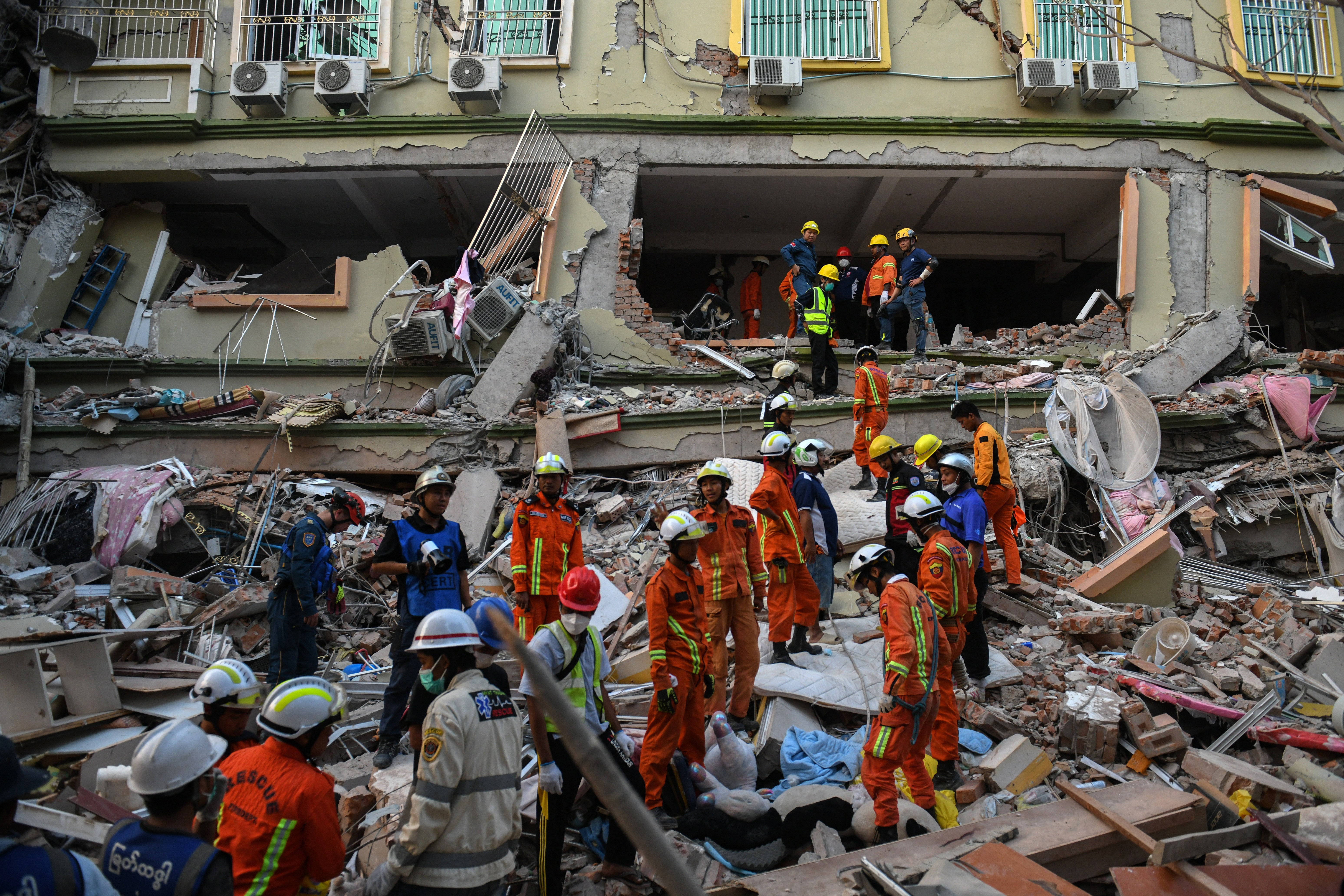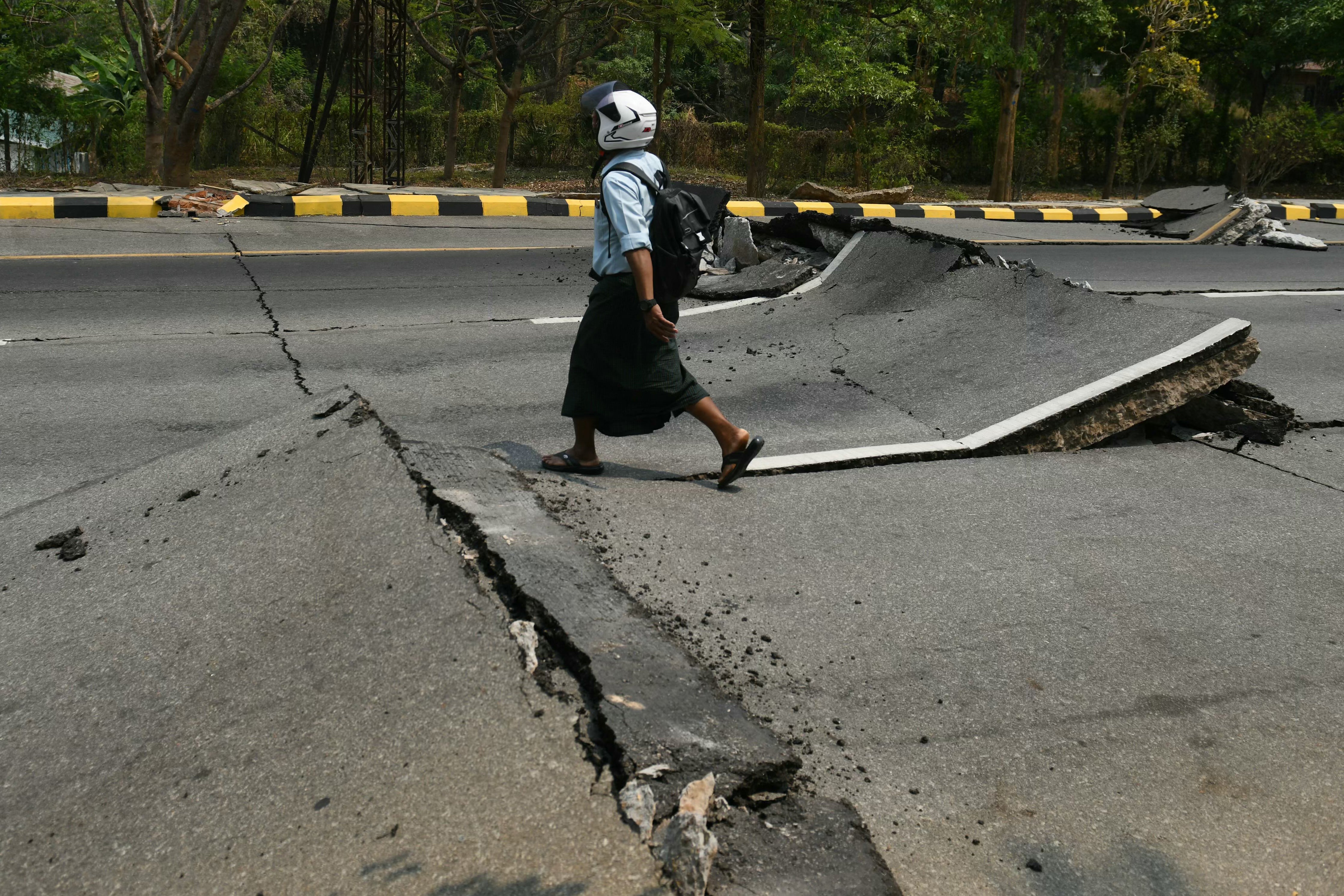The devastating magnitude 7.7 earthquake, which struck Myanmar on Friday, killing over 2,800 people and leaving thousands more injured, was caused by a rare “supershear” rupture that moved fast and far, scientists say.
With tremors felt hundreds of miles away as far as the Thai capital of Bangkok, the death toll from the quake continues to rise, with over 3,900 reported injured and about 270 missing.
Many are feared trapped under collapsed buildings across Myanmar and dozens from the collapse of a high-rise building under construction in Thailand.
Scientists say the geological fault which broke during the quake – the massive Sagaing fault between the Burma and Sunda tectonic plates – likely ruptured “very fast” and as far as 400km (250miles) to trigger the quake.
“The earthquake occurred on the Sagaing Fault – the major tectonic structure that accommodates the northward motion of India and western Myanmar with respect to the rest of South East Asia,” said Ian Watkinson, seismologist from Royal Holloway, University of London.

This fault passes from the Andaman Sea in the south to the very northern part of Myanmar and is “very similar in scale, movement and seismicity” to the San Andreas Fault in California, Dr Watkinson said in a statement.
“The rupture propagated both north and south with a rupture velocity of about 3km (1.8miles) per second,” seismologist Frederik Tilmann from the GFZ Helmholtz Centre for Geosciences in Potsdam, Germany, said in a LinkedIn post.
“Remarkably, the southward propagating rupture accelerates up to a speed of about 5kmps,” Dr Tilman said, indicating that the rupture was likely a “supershear” rupture.

In supershear quakes, scientists say the rupture underground travels faster than the seismic waves it produces.
This tends to concentrate seismic energy before the rupture, causing greater damage at much greater distances compared to normal quakes.
Such a rupture of the fault is “the earthquake equivalent of a supersonic jet”, he said.
“The supershear rupture leads to a strong radiation of seismic energy in the forward direction,” the seismologist explained.
“The magnitude 7.7 earthquake appears to have ruptured a 200km section of the Sagaing Fault, a major North-South fault that separates the India plate and the Sunda Plate,” said seismologist Brian Baptie from the British Geological Survey (BGS).
Dr Baptie observed that the rupture propagated from North to South in just about a minute.
This unusually fast movement of the tectonic plates may have “exacerbated damage” seen in Myanmar and caused the drastic effects experienced in Bangkok over 1000km (620miles) away from the epicentre, Dr Tilman said.
“The earthquake resulted in intense ground shaking, with at least 2.8 million people in Myanmar exposed to severe or violent shaking, with most of the population in the region living in buildings that are constructed from timber and unreinforced brick masonry, and that are vulnerable to earthquake shaking,” Dr Baptie added.
Satellite imagery in the coming days may confirm the theory, scientists say.
Man rescued from rubble in Myanmar's capital but hope fading of finding more earthquake survivors
Worried families and rescue dogs bond during the long days of searching at Bangkok collapse
Myanmar earthquake: Young girls trapped under rubble with grandmother plea for help
Hooters restaurant chain, known for skimpy wait-staff outfits, files for bankruptcy protection
Stone found by three-year-old turns out to be 3,800-year-old amulet
Plans unveiled for atom smasher even bigger than the Large Hadron Collider







